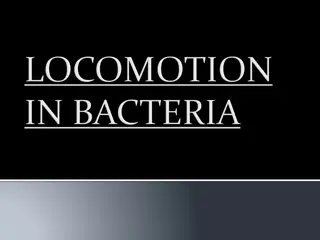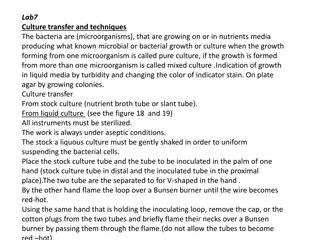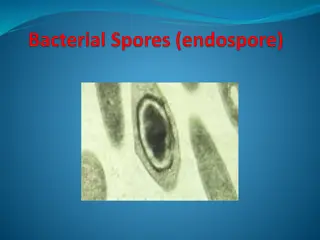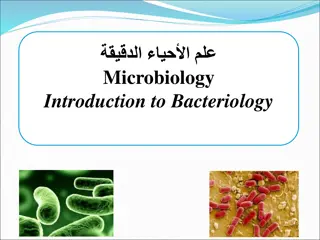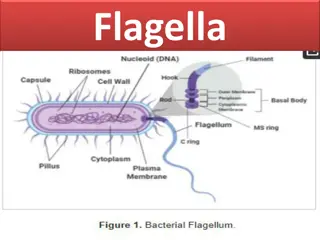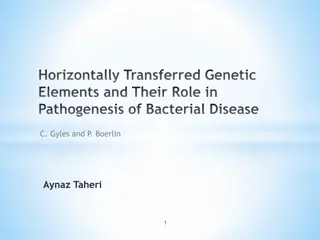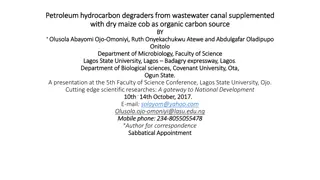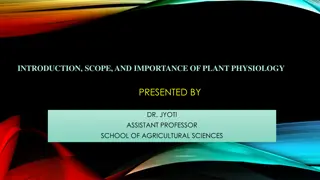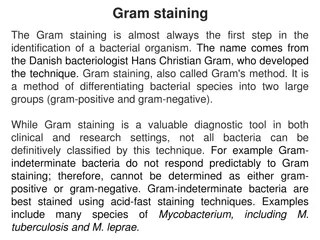Understanding Bacterial Physiology and Growth
Bacterial physiology encompasses the growth, nutrition, and metabolism of bacteria. Bacterial growth involves binary fission, generation time, colony formation, and is influenced by various factors such as temperature, atmosphere, moisture, and radiation. Understanding the classification based on temperature requirements of bacteria is essential for studying their behavior and characteristics.
Download Presentation

Please find below an Image/Link to download the presentation.
The content on the website is provided AS IS for your information and personal use only. It may not be sold, licensed, or shared on other websites without obtaining consent from the author. Download presentation by click this link. If you encounter any issues during the download, it is possible that the publisher has removed the file from their server.
E N D
Presentation Transcript
BACTERIAL PHYSIOLOGY Dr. oruba Khalid abbas Lec.2
What does physiology means ? IT S THE GROWTH, NUTRITION, AND METABOLISM
1-BACTERIAL GROWTH It is an increase in all the cellular components, which end in multiplication of the cell leading to an increase in population. It involves an increase in the number of individual cells. Bacteria divide by binary fission. Binary Fission is a type of Asexual reproduction in single celled organisms Each cell divides into 2 equal sized offspring
Generationtime Interval of time between two cell divisions OR The time required for a bacterium to give rise to 2 daughter cells conditions under optimum
Generation time of E.coli & other medically important bacteria is 20 mins For tubercle bacilli is 20 hrs For lepra bacilli is 20 days
Colony by growing media. formed bacteria on solid Each bacterial colony represents a clone derived single parent cell. of from cells a
FACTORS AFFECTING BACTERIAL GROWTH INCLUDE: 1. 2. 3. 4. 5. 6. 7. Temperature Atmosphere O2 & CO2 H-ion concentration Moisture & drying Osmotic effects Radiation Mechanical & sonic stress
1-Temperature Bacteria vary in theirtemperature requirements. Temperature range growth does not occur above the maximum or below the minimum. Optimum Temperature It is the temperature at which growth occursbest, it is 37 C for most pathogenic bacteria
CLASSIFICATION BASED ONTEMP. Mesophilic growsbest between 25 C and40 C. e.g. mostpathogenic bacteria Psychrophilic (coldloving) grows best below 20 C e.g. Flavobacterium spps Thermophilic growsbest at high temp, 55- 80 C e.g. Bacillus sterothermophilus
2-OXYGEN requirement, bacteria are Depending on the O divided into : 2 1. Obligate aerobes: are those organisms thatlive only in the presence of oxygen with its atmosphericconcentration. 2. Obligate anaerobes: arethoseorganismsthat live only in the complete absenceof oxygen, its presencewill leadto deathof theseorganisms. 3. Facultative Anaerobes; are those organisms that live in thepresence or absence of oxygen, but the presence oxygen will inhibit the anaerobic system 4. Microaerophiles; are those organisms that live aerobically, butunder low concentration ofoxygen. 5. Aerotolerants; arethosegroup of microorganismsthat normally live and grow in the absence of oxygen, but O2 presence will lead to stop its growth without killingit. 6. 7
3- H-ion Concentration pH range, optimum pH Majority of pathogenic bacteria grow best at neutral or slightly alkaline pH (7.2 7.6) . Lactobacilli require acidic pH Vibrio cholerae require alkaline pH
4- Moisture and drying Water is an bacteria. Hence drying is lethal to cells. essential ingredient of Effect of drying varies : Trepanoma pallidum are highly sensitive to drying Staphylococcus spp. withstand drying for months Spores are resistant to drying and may survive for several decades
5- Osmotic effects More tolerant to osmotic variation due to mechanical strength of their cell walls. 6- Radiation X rays & gamma rays exposure lethal 7- Mechanical & Sonic Stress May be ruptured by mechanical stress.
MICROBIAL GROWTH CULTURE MEDIA CULTURE MEDIUM -Culture Medium: Medium containingnutrients that support microbial growth -Sterile: No living microbes -Inoculum: Introduction of microbes into medium -Culture: Microbes growing in/on culture medium Types of Culture Media Enrichment Culture Nutrient media Special media Selective Media Differential Media Selective and Differential Media
BACTERIAL GROWTH CURVE When a bacterium is added to a suitable medium & incubated, its growth follows a definite course. If bacterial counts are made at intervals after inoculation & plotted in relation to time, a growth curve is obtained. Growth curve shows 4 phases : Lag, Log or Exponential, Stationary Decline. & phase of
PHASES OFGROWTH Lag phase no increase in number but there may be an increase in the size of the cell. Log or Exponential phase cells start dividing and their number increases exponentially.
Stationary phase cell division stops due to depletion accumulation of toxic products. - Equilibrium exists between dying cells and the newly formed cells, so viable count remains stationary of nutrients & Phase of decline Population decreases due to the death of cells autolytic enzymes.
BACTERIAL COUNTS Growth in numbers can be studied by bacterial counts. 2 methods Total cellcount - Viable cell count
TOTAL COUNT Total number of cells in the sample living + dead. Can be obtained by : 1. Direct counting under microscope using counting chambers. 2. Counting in an electronic device Coulter counter.
Viable Cell Count Measures the number of living cells. Methods Surface colony count 1. Dilution method 2. Plating method Number of colonies that develop after incubation gives an estimate of the viable count.
2-Bacterial Nutrition Water constitutes 80% of the total weight of bacterial cells. Proteins, acids & low molecular weight compounds make up the remaining 20%. polysaccharides, lipids, nucleic For growth & multiplication, the minimum nutritional requirements are water, a source of carbon, a source of nitrogen & some inorganic salts
Classification of bacteria based on nutritional requirements Autotrophs are free-living, most of which can use carbon dioxide as their carbon source. The energy can be obtained from: sunlight protoautotrophs (get energy from photochemical reactions) inorganic compounds, chemoautotrophs (get energy from chemical reactions) Heterotrophs are generally parasitic bacteria, requiring more complex organic compounds than carbon dioxide, e.g. sugars, as their source of carbon and energy. by oxidation
OTHER GROWTH REQUIREMENTS 1. 2. Thiamine 3. Riboflavine 4. Nicotinic acid 5. Pyridoxine 6. Folic acid 7. Vit.B 12 Vitamin B complex
Metabolism is the process of building up chemical compounds in the cell and their breaking during activity to receive the required energy and the building elements. Metabolism comprises of anabolism (assimilation) and (dissimilation) down catabolism
Bacterial Metabolism Help us in identifying bacteria by their end products Help us in knowing how to inhibit bacteria
Energy Generating Process Sugars formed or obtained - broken down to release energy Aerobic respiration Anaerobic respiration Fermentation Microbes that use aerobic respiration, detoxify generated waste: Catalase: H2O2 ------- H20 and 02 Superoxide dismutase : oxygen radical ----- O2 H20 and
Energy Generating Process Aerobic respiration: COMPLETE breakdown of glucose to CO2 & H2O Final electron receptor O2 Yield = 38 ATP Fermentation: Yield = 2 ATP Endproducts: Lactic acid/Alcohol Final electron receptor is organic molecule Anaerobic respiration: Yield >2 <38 ATP Absence of oxygen





